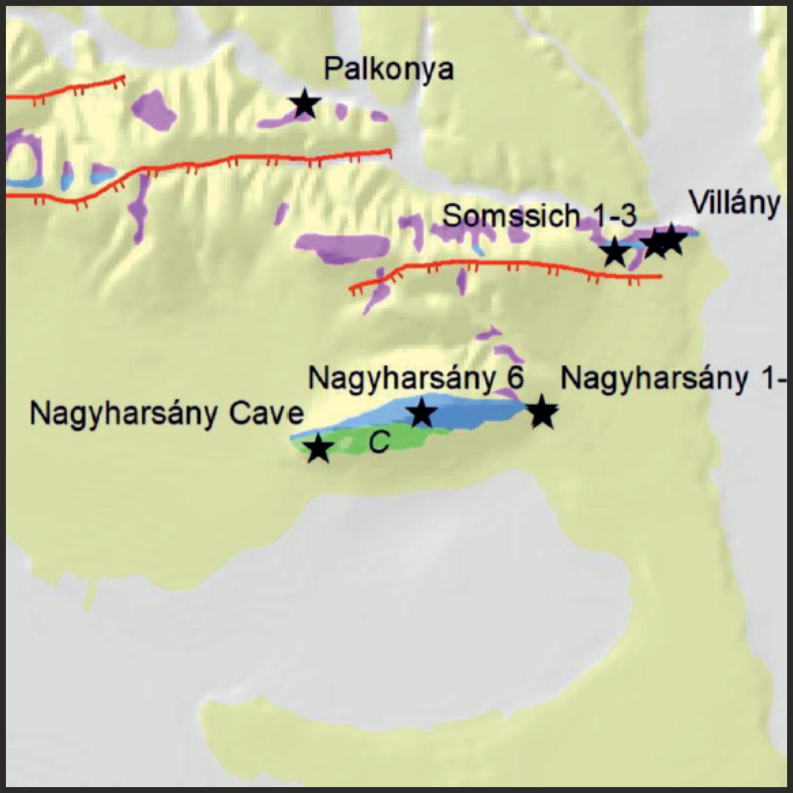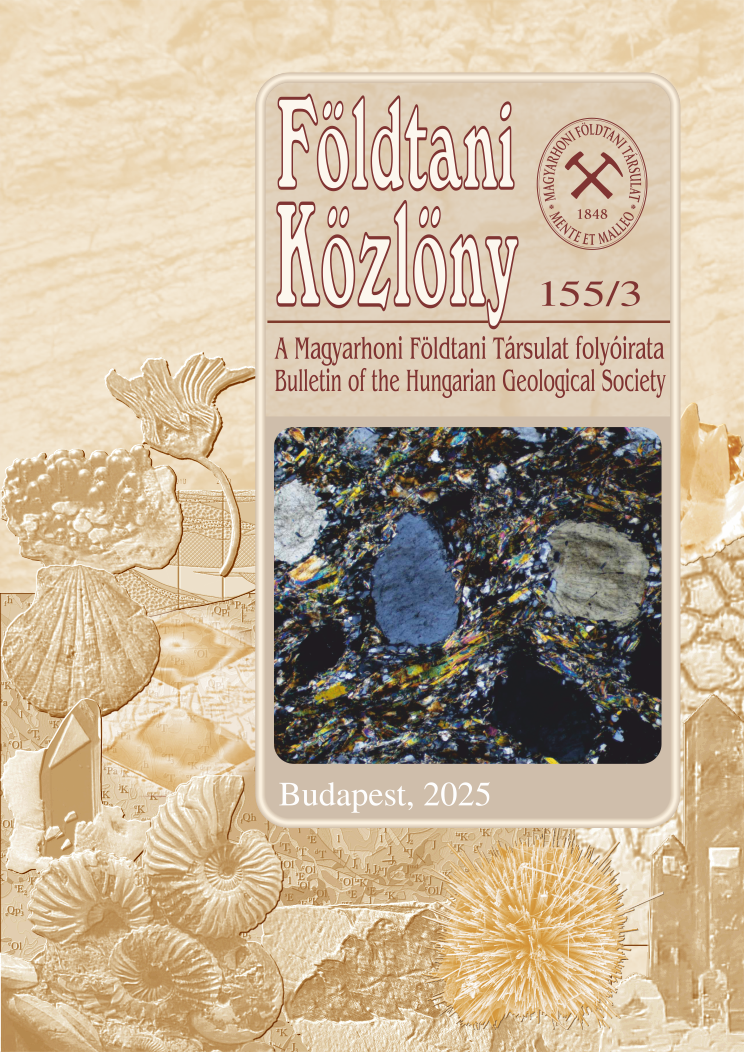Late Neogene–Quaternary exhumation of the Tisza unit basement carbonates based on paleontological data: Villány Hills, SW Pannonian Basin
Abstract
Miocene Lake Pannon deposits and thus obtain numerical constraints on neotectonic uplift rates. Filled mostly with unstratified sediments, probably partly of aeolian origin, and enriched in vertebrate fossils, the studied fossiliferous cavities represent sites above the coeval base level. The accumulation of a vertebrate assemblage indicates the subaerial exposure of the Mesozoic carbonates at the given site. Based on the analysis of the elevation distribution of datable vertebrate sites, most of the Villány Hills had been exhumed from under Lake Pannon sediments before the accumulation of the first assemblages, 3.5 Ma, almost to its modern state. Base level lowering rate between 3.5 Ma and present was maximum 35 m/Ma for the main range and max. ~15 m/Ma for the Beremend block in the south. Latest Miocene – Early Pliocene (~6–3.5 Ma) minimum exhumation rates are estimated to be probably around 76–92 m/Ma for the main range and certainly above 12 m/Ma. Respective numbers for the Beremend block are 97–111 m/Ma and 37 m/Ma, carrying more uncertainty because this block might have suffered minor subsidence as well. Decreasing uplift rates in the Pliocene and Quaternary are tentatively attributed to the transpressional activity of the Drava Basin boundary fault from the Early Pliocene, which now accomodates a major portion of deformation in the region induced by the Adria-Europe convergence. The majority of the fossiliferous fissures was not a direct product of tectonic deformation, therefore they cannot be used in stress field reconstructions. This study shows that even caves not formed at the paleo-base level can be used to constrain uplift rates.
















